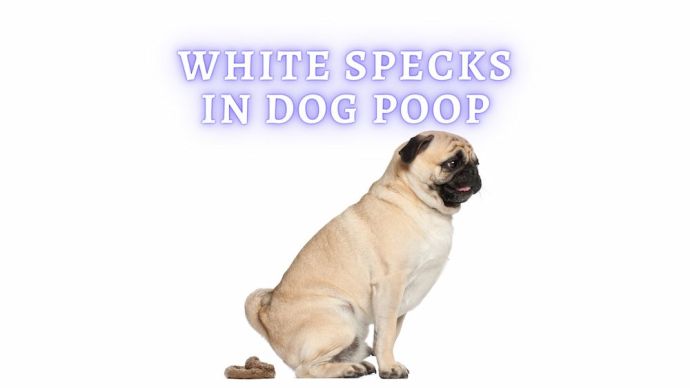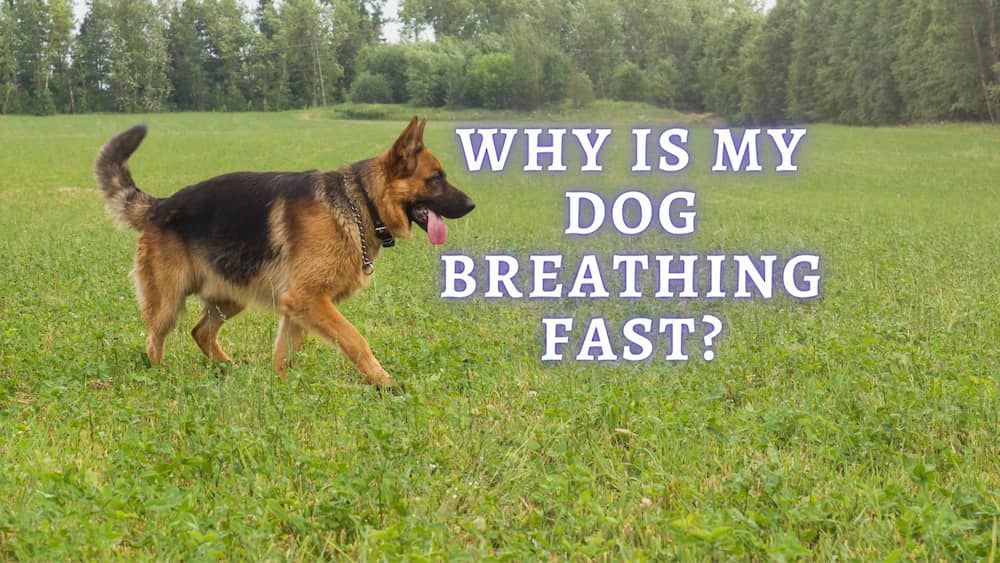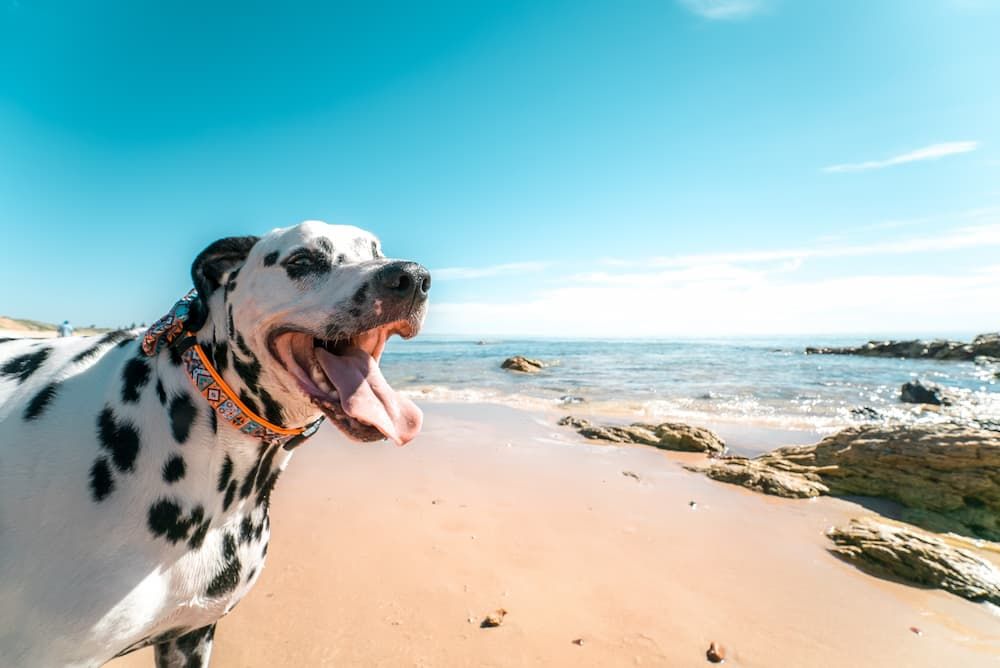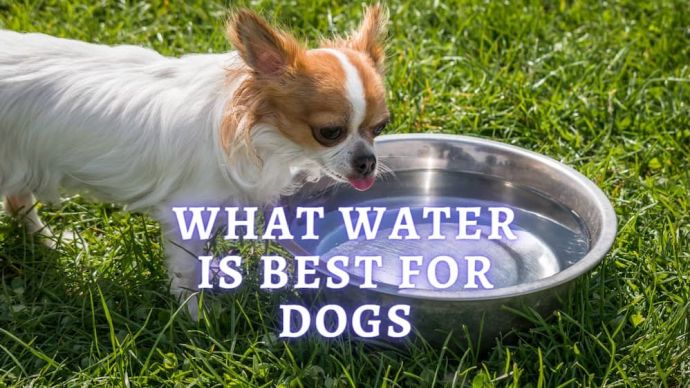Dog Breathing Fast: Why Is My dog breathing fast?
Written by:
Author: Vicki Smirnova
Vicki Smirnova is a professional writer and editor who adores animals and helps readers get along well with their pets. She has been working in digital media for more than 5 years and has great experience writing content about lifestyle, including pets. Vicki specializes in dog health and nutrition, cat feeding, dog training. She is an aquarium lover and is passionate to write about fish care at home. Also, Vicki headed several websites and worked as a news editor.
View all 245 articlesLearn about our editorial process and veterinary review board.
Reviewed by:
Veterinary review
by Dr. Linda Simon
Dr. Linda Simon is a veterinary surgeon working with seven years of experience. She is a fellow of the British Veterinary Association and specializing in animal medicine. Also, she has been the Woman magazine resident vet for the past two years and writes a regular column for them, focusing on pets and their health.
View all 30 articlesLearn about our veterinary review board
Viewed: 444
Updated on: 07/01/2021
Usually, owners do not pay much attention to how their dog breathes. Breathing in a healthy dog is calm, soft and rhythmic. The movements of the chest wall when inhaling and exhaling are smooth. Normal breathing is quiet and only really heard once you get quite close to the dog. Typically, dogs breathe through their nostrils with their mouths closed. Of course, when panting during exercise or when hot, they will breathe through their mouth.
It is worth mentioning the brachycephalic breeds here. If they suffer with ‘Brachycephalic Upper Airway Syndrome’ they will produce noisy, loud breathing with whistles, snores and sounds, even when the dog is asleep.
When a dog breathes rapidly, it is not always a sign of illness. Many physiological conditions are accompanied by an increase in the respiratory rate and the appearance of shortness of breath. Breathing in dogs can be shallow or deep, quick or slow, depending on what the dog is doing.
Breathing and the work of other body systems are interconnected. Thus, changes in the pet’s body can also affect respiratory function. Breathing is not just a gas exchange (oxygen and carbon dioxide) between the body and the environment in the lungs. This process also performs other functions:
- Use of oxygen in chemical reactions (cells also breathe).
- Participation in heat exchange.
- Participation in maintaining the constancy of the internal environment (homeostasis).
There are several non-disease-related respiratory changes:
1. Young age
For puppies, their breathing rate is generally a little higher than adults: they have a relatively higher body temperature and faster metabolism. Breathing can be frequent after active games, feeding, if the puppy is hot or he wants to go to the toilet. During REM (deep) sleep, puppies will often breathe fast. Once awake, this settles back to normal.
If the puppy breathes often and has other signs such as lethargy, a reduced appetite, coughing or an increased body temperature we would need to consider a medical condition such as an infection. In case of any abnormalities in the puppy’s condition, accompanied by rapid breathing, it is better to consult a veterinarian.
2. Troubled sleep
What about if your dog is breathing fast while resting? Sleep in pets also consists of several phases. The rapid phase of sleep is accompanied by an increase in brain activity. When a pet has a dream, his paws, eyelids and lips may begin to tremble, their breathing becomes faster and sometimes they may even start to make quiet sounds. This is not a cause for concern.
3. Stress and anxiety
Unfamiliar situations lead to activation of brain activity. When stress hormones are released into the blood, the blood pressure increases, and more energy is spent.
For energy production, cells use a large amount of oxygen that enters the body during breathing. Therefore, to compensate for the lack of oxygen in the body, in “extreme” conditions, the pet’s breathing becomes faster and shortness of breath appears.
A dog suffering from a noise phobia or separation anxiety often pants and breathes quickly.
READ MORE: Why Does My Dog Get Hiccups?
4. Anatomy of the breed
The smaller the size of the animal, the more frequent the breathing, even among dogs. In a small body, all metabolic processes are faster. As a result, the heartbeat, respiration, and body temperature have physiological variability; that is, there are upper and lower limits of the norm. [1] A chihuahua will generally breathe several times more a minute than a Great Dane.
5. Heatstroke
In hot weather, rapid breathing leads to increased evaporation of moisture from the surface of the respiratory tract and an increase in the concentration of oxygen in the blood, which is necessary for cells in a state of stress. Such mechanisms of self-regulation lead to the normalization of the overall body temperature. However, this mechanism is not successful if the external temperature is too high. This will result in heatstroke, a potentially fatal condition.
Overheating the body during active walks in hot weather always has a risk of causing heat stroke. This will be accompanied by a dangerous increase in body temperature. Importantly, heat stroke can even occur when an animal is resting e.g. laying down inside a hot car.
6. Physiological Tachypnea
Several natural causes lead to rapid breathing in dogs – physical activity (games, running), increased excitability (caused by any strong emotions as a result of an event — this can be both fright and joy; for example, from the return of the owner) and breathing in a dog can become more frequent during estrus, pregnancy and lactation.
Reasons for a dog’s rapid breathing
The best way to determine whether or not a pet has a breathing disorder is to count the frequency of breaths per minute and to assess the overall patient. The norm is 12 to 30 breaths per minute at rest. An increase in the respiratory rate may indicate an underlying medical issue. If there is no clear explanation for faster breathing (such as stress or heat), we need to pay attention. At the first signs of such diseases should immediately consult a veterinarian.
Possible pathological explanations
1. Onion or garlic poisoning
This is a common cause of hemolytic anemia in dogs and cats. Pets are often given food from the table, canned food intended for humans and baby meat puree; that is, products containing onions and garlic. According to The Journal of Venomous Animals and Toxins including Tropical Diseases ISSN 1678-9199, for dogs and cats, all plants of the genus allium (onion, shallots, etc) are toxic without exception. They include allyl propyl sulfide (H5C3S2C3H7) and dipropyl disulfide (H7C3S2C3H7). These are oxidizing substances that convert blood hemoglobin into methemoglobin, which is unable to transport oxygen molecules to the tissues. The result of this is hemolytic anemia and shortness of breath. [2]
2. Allergic reaction
Allergic reactions are frequently accompanied by edema, including of the mucous membranes of the respiratory tract, pharynx, tongue, and mouth. If the allergic reaction is of an immediate-type (that is, it appears almost immediately after exposure to the allergen), then rapid breathing develops quickly as, due to edema, the airways narrow. Wheezing is often seen and dogs will become distressed. This condition is dangerous because there is a risk of asphyxia (suffocation) in the pet. You should immediately consult a veterinarian at the first signs of an allergy (swelling of the muzzle or eyelids, hives or collapse).
READ MORE: Dogs Seasonal Allergies
3. Anemia
Anemia can be caused by blood loss, the breakdown of blood or the failure of the body to produce red blood cells.
Blood loss, for example, can occur when a dog has been hit by a car. This may be internal or we may see bleeding on the outside of the dog’s body. The main consequences of blows and are traumatic edema and inflammation, tissue necrosis, the development of pain and internal bleeding. Both pain and bleeding lead to increased breathing in the dog. The first is associated with the release of adrenaline and other active substances, increased blood pressure, spasm and tissue destruction. Internal bleeding leads to anemia, reduces the supply of oxygen to the cells and causes shortness of breath.
As another example, the development of anemia may occur due to cancer. This resuts in shortness of breath. If the tumor directly affects the lungs, then shortness of breath will occur. There can be hypoxia (low oxygen levels_ due to the narrowing of the lumen of the respiratory tract by the tumor or destruction of lung tissues during tumor growth. There may also be fluid in and around the lungs, disrupting gas transfer. [3]
4. Lung disease
The respiratory system is a system of tubes through which air is delivered to the lung tissue. Infection, inflammation and oedema can lead to a decrease in the lumen size and the formation of mucous plugs. This reduces the volume of air entering per unit of time. At the same time, the need for oxygen does not change, and therefore respiratory failure develops. Faster breathing is an attempt to maintain a constant level of oxygen in the blood and cells of the body.
5. Foreign bodies
Foreign bodies in the respiratory tract are another cause of respiratory failure, which is manifested by coughing, salivation and wheezing. A foreign body blocks the lumen of the respiratory tract. Additionally, there is inflammation, swelling and accumulation of mucus. This significantly impedes the flow of oxygen to the lungs. To make up for the lack of oxygen, the body needs to breathe more often and harder, so the pet begins to breathe with its mouth open. However, if the object completely blocks airflow, the dog will not breathe at all. It is necessary to immediately head to the nearest vet clinic to seek treatment if the foreign body cannot be dislodged at home.
6. Heart Failure
The heart is a muscular pump that ensures the constant movement of blood through the vessels of the lungs and abdominal organs. Deterioration of the heart can lead to increased pressure in the vessels of the lungs, edema of the lung tissues as well as a decrease in cardiac output. This can provoke the development of hypoxia – a decrease in the oxygen content in the blood and body cells. To compensate for hypoxia, the animal’s breathing becomes faster. Therefore, it is so important for dogs with heart diseases to monitor their respiratory rate during sleep. Faster breathing can indicate uncontrolled heart disease and we may need to alter their treatment protocol.
7. Bloat
If an animal develops bloat, their stomach will fill with air. This distension can result in shock and put huge pressure on the respiratory and circulatory system. Dogs will pant, drool and have a visibly distended stomach. In some cases, the stomach will twist on its axis, which can ultimately be fatal. As soon as you notice your dog’s abdomen swelling, seek vet care.
8. Medications
Some medicine, such as steroids, will cause a dog to pant. This is due to the increased cortisol levels as well as liver enlargement.
How to help a pet with respiratory disorders?
First of all, if the dog has rapid breathing, you need to find out whether there is a threat to the pet’s life. Situations in which it is recommended to immediately go with the dog to the vet:
- Frequent shallow breathing or persistent shortness of breath.
- Mucous membranes that are dark, grey, blue, or white.
- Inability to eat or drink or an inability to swallow. This may manifest as food refusal and excessive drooling.
- Bleeding from the oral and nasal cavities.
In the case of shortness of breath during hot weather, it is recommended to calm the dog, move them into the shade, bathe them with tepid water, provide drinking water and measure the body temperature. Provide fresh air if indoors If the breathing soon stabilizes and the pet is soon back to their normal self with a normal temperature, continue to monitor them but we may well be out of the woods. A visit to the veterinarian is needed if signs persist or there are any additional concerns.
It is especially important to carefully monitor brachycephalic dogs (with a shortened muzzle) and breeds predisposed to cardiopathology – German shepherds, Wolfhounds and all giant breeds.
DVM Linda Simon
READ More: Dehydration in Dogs
FAQs
Why is my dog breathing fast while resting?
Rapid breathing during rest can mean that the dog is in discomfort, anxious or hot. You should contact your veterinarian if there is any unusual color of the oral mucosa (blue or blue-purple hue) or the fast breathing is unexplained.
Is it normal for dogs to breathe fast while sleeping?
Puppies do not just sleep, they also dream, twitch, paddle their little paws, yelp and breathe quickly. This can be normal. However, when awake, the breathing should return to normal.
Is rapid breathing a sign of pain in dogs?
The causes of rapid breathing in dogs are divided into physiological and pathological. Rapid breathing during pregnancy and immediately after childbirth or when hot or exercising can be the norm. However, fast breathing can also signify a fever, pain or a medical issue.
How do I calm my dog’s breath?
In case of shortness of breath, check for any stressors. For example, if there is another dog in the room that is making your dog anxious, consider moving them away. Similarly, if the weather is warm, it is important to cool your dog. However, if the fast breathing is caused by a medical issue, a vet visit will be needed to get on top of things.
Article Sources:
- Crosland, Robert, and Hannah Ranson. Worrying Numbers of “Short-Nosed” Dog Owners Do Not Believe Their Pets to Have Breathing Problems, despite Observing Severe Clinical Signs. 10 May 2021, rvc.ac.uk/News/PressReleases/pr1205_BreathingProblemsInDogs.cfm.
- Salgado, B. S., et al. “Allium Species Poisoning in Dogs and Cats.” The Journal of Venomous Animals and Toxins Including Tropical Diseases, scielo.br/j/jvatitd/a/HB5wqsgNcbhcg8cGm3hy95j/?lang=en&format=pdf.
- Brooks, Wendy. “Immune-Mediated Hemolytic Anemia (IMHA) in Dogs and Cats.” Veterinary Partner, 4 Mar. 2003, veterinarypartner.vin.com/default.aspx?pid=19239&id=4951868.
 Dog Care White Specks In Dog Poop: What Are The Little White Specks In Dog Poop? (Vet Advice)
Dog Care White Specks In Dog Poop: What Are The Little White Specks In Dog Poop? (Vet Advice) - 557
- 0
 Dog Care Can Dogs Eat Sour Cream? Benefits and Risks of Feeding Your Dog Sour Cream
Dog Care Can Dogs Eat Sour Cream? Benefits and Risks of Feeding Your Dog Sour Cream - 5580
- 0
 Dog Care Dog Stung By Bee: What To Do If Your Dog Gets Stung By A Bee? (Vet Approved Advice)
Dog Care Dog Stung By Bee: What To Do If Your Dog Gets Stung By A Bee? (Vet Approved Advice) - 56
- 0
 Dog Care My Dog Keeps Scratching His Mouth: Reasons Why Your Dog Scratching Face
Dog Care My Dog Keeps Scratching His Mouth: Reasons Why Your Dog Scratching Face - 17168
- 1
 Dog Veterinary Tips Why is my Dog throwing up: Causes and Preventing (Veterinary Advice)
Dog Veterinary Tips Why is my Dog throwing up: Causes and Preventing (Veterinary Advice) - 21800
- 5
 Dog Care My Dog Keeps Scratching His Mouth: Reasons Why Your Dog Scratching Face
Dog Care My Dog Keeps Scratching His Mouth: Reasons Why Your Dog Scratching Face - 17168
- 1
 Dog Care Why Is My Dog Bleeding From Its Butt? Causes and treatment of rectal bleeding in the dog
Dog Care Why Is My Dog Bleeding From Its Butt? Causes and treatment of rectal bleeding in the dog - 15103
- 0






















